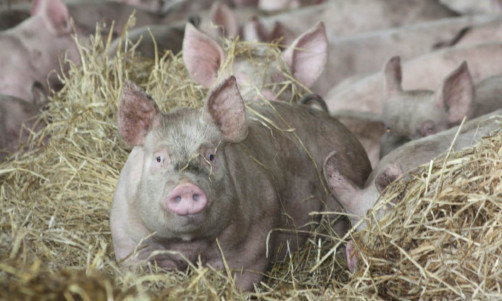Quality Meat Scotland began its last financial year with the aim of operating on a “break-even budget”, but ended with a bottom-line surplus of more than £77,000.
According to chief executive Uel Morton, the healthy figures reflect a year focused sharply on industry development work as well as money saved following a decision not to commission scientific research.
The year ending on March 31 2014 saw the organisation’s total income hit £7.25 million, up from a figure closer to £6.9m the year before.
But the financial figures also follow a year dogged by continued levy income decline, courtesy of both a diminishing number of animals being produced in Scotland and an increase in the number of animals slaughtered south of the border.
During the year, QMS received more than £4.09m in statutory red meat levy (down from £4.43m in 2012/13 and a reduction yet further from £4.9m in 2011/12).
According to Mr Morton, all three red meat species are guilty for the shortfall against last year’s levy income.
“It’s not just one species to blame for the fall,” he said.
The biggest levy shortfall, however, is evident from Scotland’s pig sector, where levy was down by £254,000 equivalent to a hefty 40% decline.
Sheep levy fell just 3%, or £33,000, whilst cattle levy dropped only 2% or £53,000.
“Looking forward, the changes to the footprint of abattoirs here in Scotland in the Orkney Meats and Galashiels abattoirs in the 11/12 year and then in 12/13 through the merger of Scotch Premier and Mathers of Inverurie and the closure of Vion Halls at Broxburn has seen a gradual concentration of abattoir capacity, in fewer hands,” said Mr Morton.
“It is therefore very encouraging to see the Brechin abattoir coming into new ownership as this sends a very positive message to producers in Scotland, as well as having a future positive impact upon industry pig levies.”
He said this will allow QMS to carry out increased promotion of the Specially Selected Pork brand.
“The decreases in Scottish kill numbers in the 2013/14 year reflects the double-edged sword of reducing numbers of livestock being produced in Scotland and increasing numbers of Scottish livestock, sheep and pigs, being slaughtered south of the border.”
Elaborating on the perennial problem of the leakage of levies out of Scotland, Mr Morton said the investment at Brechin should help to claw back quite a significant amount of the pig levy which is drifting south.
In terms of sheep, he said: “Scotland currently slaughters only around half of our production, so that has always traditionally presented a levy challenge.
“On the beef side part of the answer lies with the Beef 2020 report, and clearly there are targets set for production to increase to allow Scotland to have sufficient supply to meet the increasing demand for the Scotch Beef brand.
“The answer to all of this is to slaughter and process more animals in Scotland,” he said.
However, he felt a “step forward had been made” because a recent board meeting of the Agriculture and Horticulture Development Board recognised the current system of distribution of levies is “unfair” and does not truly reflect the livestock production capacity of the three home countries England, Scotland and Wales.
“QMS is currently involved in discussions to take this forward,” added Mr Morton.
According to QMS, ballpark figures currently show around £1m of lamb levy and £500,000 of pig levy are lost south of the border. Lost beef levy comes in below a six-figure sum.
Examining the operating costs and financial position of the board, Mr Morton said the review of industry development function allowed QMS to “cease expenditure on commissioning scientific research” and in turn focus greater effort and resource on activities driven towards industry efficiency improvements.
“That has involved some changes to personnel, and that inevitably introduces a time lag to project delivery and therefore the timing of expenditure,” he explained.
The surplus of £77,139 accounts for just 1% of the total levy board’s income.
* QMS received an income of £1.41 million in fees from consumer assurance schemes (a minor rise from £1.40m in 2012/13), as well as £1.7m in grants (up from £1.035m in 2012/13).
In total QMS took receipt of 20 grants from the Scottish Government.
“Grant income has risen £665,000 on the year, and continues on a rising plane from £880,000 from the year before that,” said Mr Morton.
“Those grants are mainly sourced from the Scottish Government and the European Commission.”
EU grants are predominantly available for marketing including a three-year, 5m euro ‘quality promotion programme’ for Protected Geographical Indication which includes match funding.
The balance of grant income of just under £1m came from Scottish Government funding for a range of activities, some of which also supports export development work,
In terms of the board’s expenditure, ‘other operating costs’ were reduced by £57,000 to £6.19m for the year.
Staff employment and board costs for the 2013/14 year stood in round numbers at £975,000 up from £931,000 the previous year and £925,000 the year before that.
Office admin costs were £172,000 £7,000 below budget.
